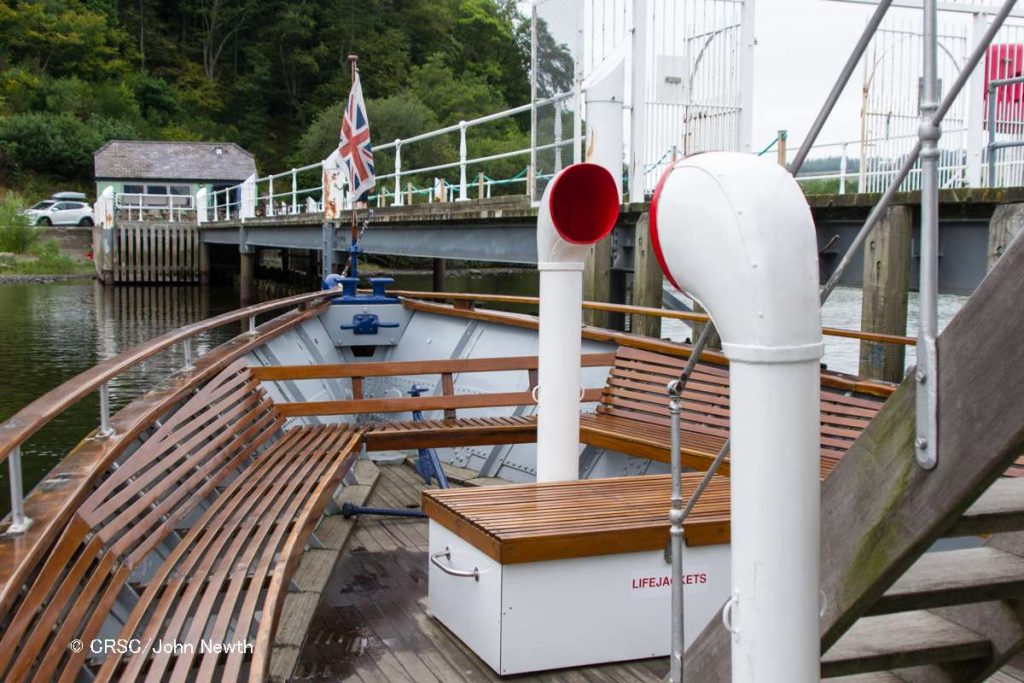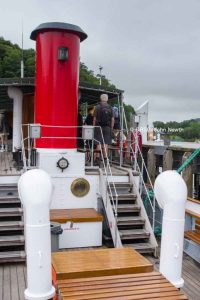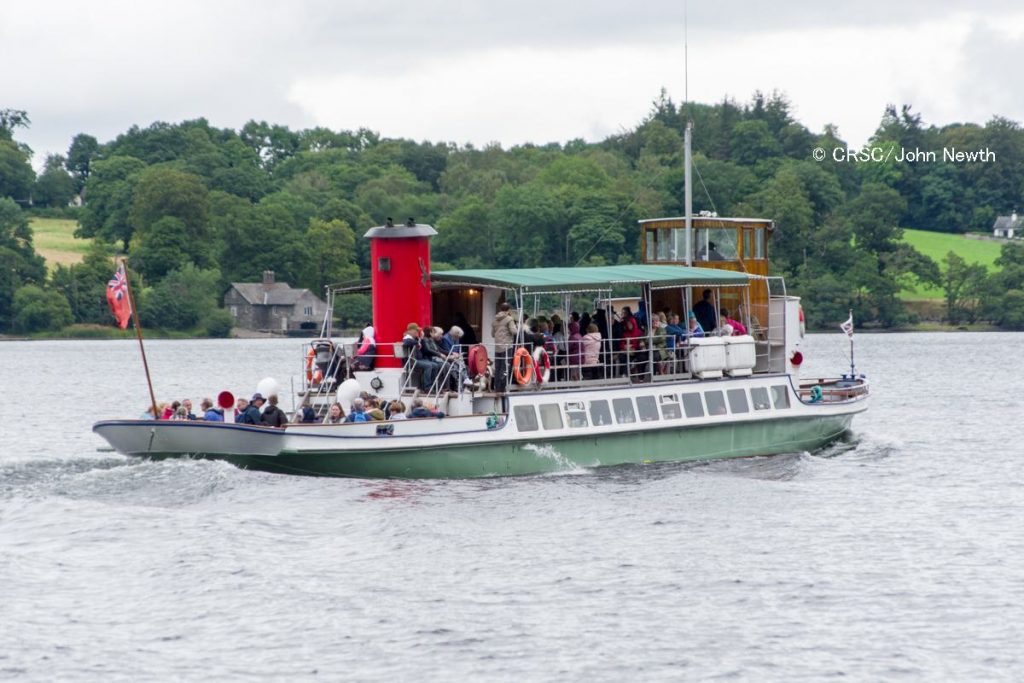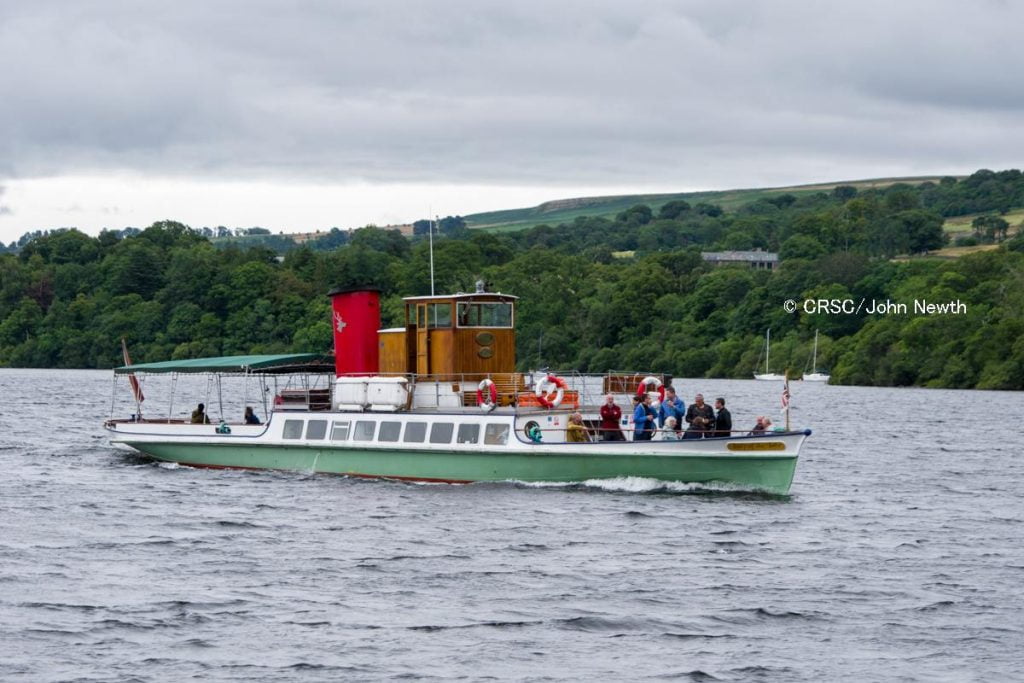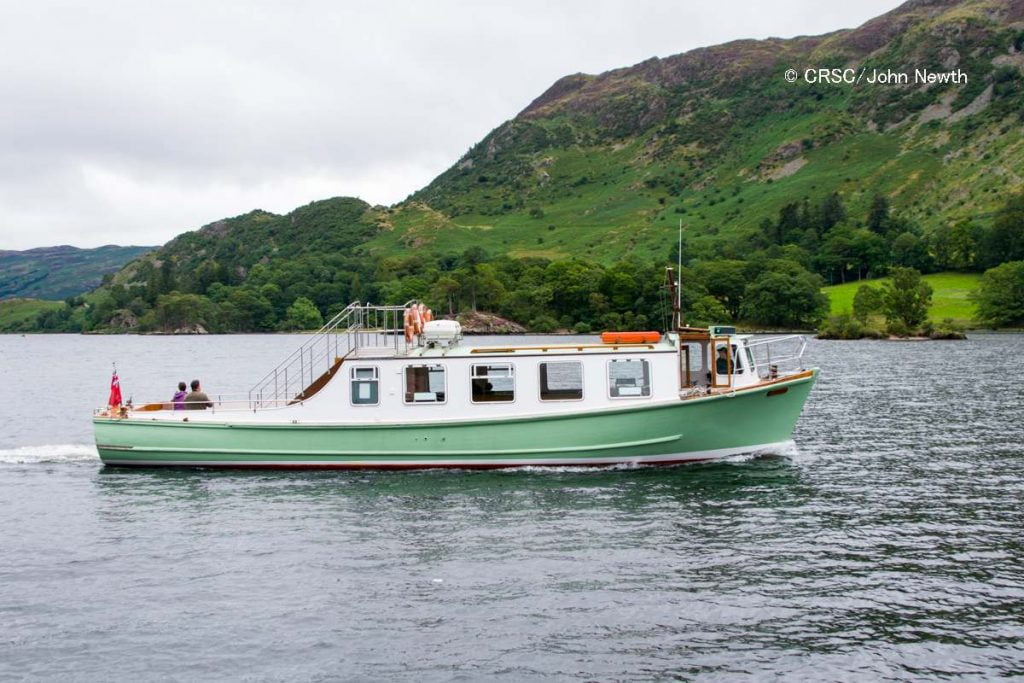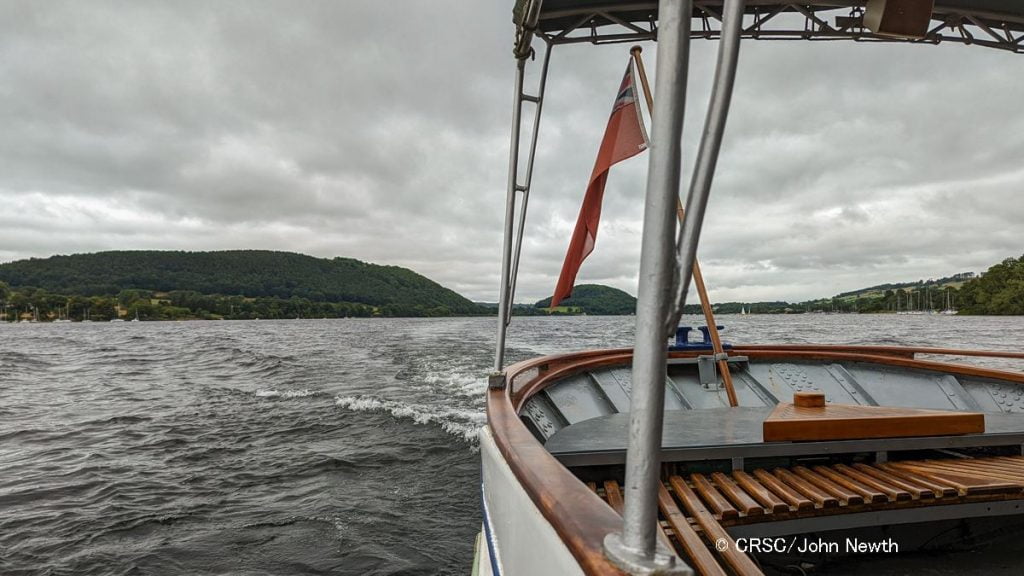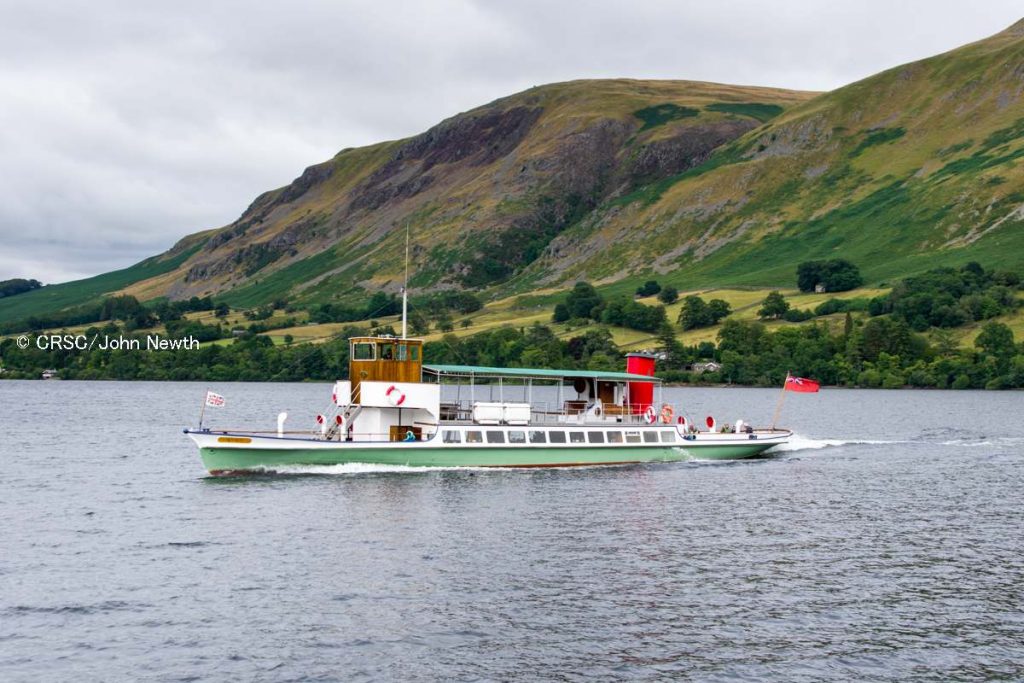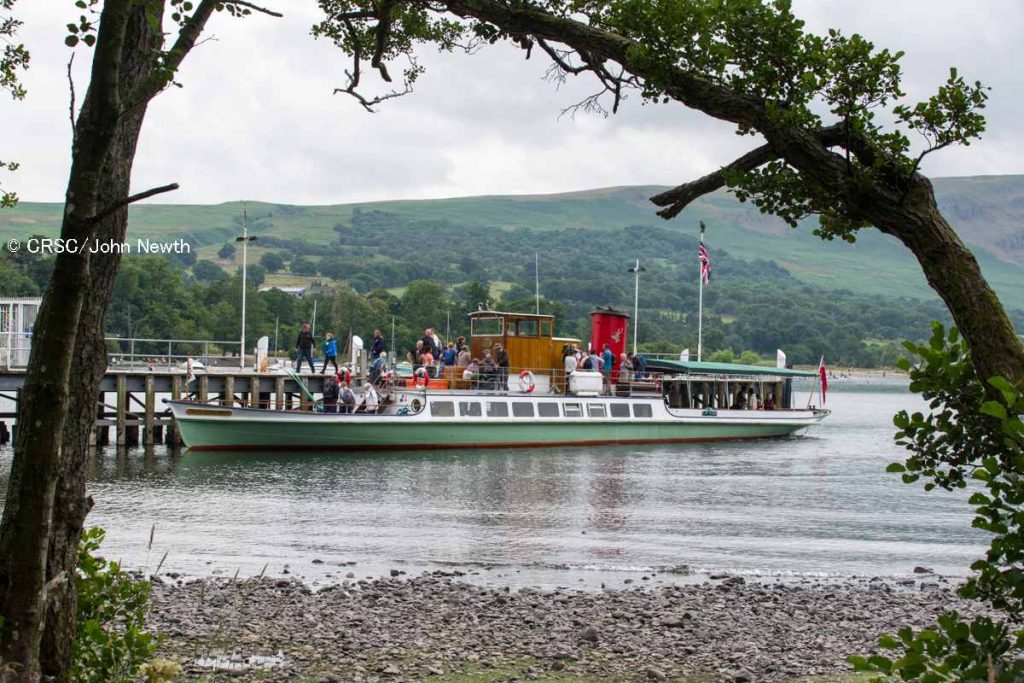
Although she has been altered several times during her long life, Lady of the Lake defies the passage of time as she disembarks passengers at Pooley Bridge, at the north-east end of Ullswater
John Newth samples the delights and quirks of a fleet of inland steamers with historic Scottish connections.
Second largest of England’s inland waterways, Ullswater stretches some eight miles from Pooley Bridge at its northern end, to Glenridding at the south end of the lake. Steamers have provided regular services since 1859, carrying only sightseeing passengers now but previously also Royal Mail, provisions, slate and lead from nearby mines and, during wartime, soldiers.
The lake today is home to the five vessels operating for Ullswater ‘Steamers’, one of the largest heritage boat fleets in the world. The inverted commas around ‘Steamers’ are part of the company’s official title, a nod to the fact that none of the fleet is actually propelled nowadays by steam.

Lady of the Lake was built at Rutherglen in 1877 with steam engines and transported to Ullswater in sections. She has been powered by diesels since 1935. Click on image to enlarge
Careful examination of their schedule revealed that it should be possible to sail on the entire fleet in one day. During the height of summer, three of the boats give round trip sailings from either Glenridding, or from Pooley Bridge, all three making a call at Howtown midway down the lake on the eastern shore.
A fourth boat is utilised on a short shuttle service from Glenridding to Aira Force, partway up the lake on the west side. The fifth vessel is used to relieve the others as necessary, or for special sailings which include an evening cruise once a week on Tuesday nights.
Two of the five ‘steamers’ were built in the 19th century by Thomas Seath’s shipyard at Rutherglen and, like many other vessels built for inland waters, transported to Ullswater in sections. Their journey from Scotland was by rail to Penrith, and then by road to the lakeside for re-assembly. One is probably the oldest vessel still carrying passengers in British waters, Lady of the Lake, which was built in 1877.
The first screw steamer on Ullswater, over the course of time Lady of the Lake has had many rebuilds. Iron hulled and originally steam driven, she was fitted with her first set of diesel machinery in 1935.
In September 1950 she sank at Pooley Bridge during a severe storm but was raised and returned to service. In 1965, while on the company’s slipway at Waterside, near Pooley Bridge, she was badly damaged by fire. This time the ‘Lady’ remained out of service. Elsewhere she might have been scrapped, but for some reason her owners decided to retain the hull while her future was considered. Eventually funding to rebuild her was approved and in 1979 she completed a lengthy restoration and returned to service.
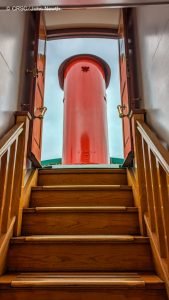
The magnificent varnished staircase leading down to the saloon on Lady of the Lake. The funnel dates from 1935
In July 1889 Lady of the Lake was joined on Ullswater by a second Rutherglen-built steamer. Named Raven, she was commissioned after the older boat had suffered an extended period out of service the previous year, and the order was placed with Seath’s yard at the behest of Thomas Cook, one of the directors of the Ullswater Steam Navigation Company. Not unlike, but larger than Lady of the Lake, she was built of steel.
In the mid-1930s both vessels had their boilers and steam machinery removed and were given diesel engines, Raven in 1934 and Lady of the Lake the following year. At the same time their original stovepipe funnels were replaced with contemporary ‘motor ship’ funnels, which they sport to this day. Further re-enginings have taken place over the years, and both are now fitted with Cummins machinery.
As already mentioned, during the peak summer period three vessels are used on the nine sailings each way between the two ends of the lake. The two veterans mostly overnight together at Glenridding, and in the morning Raven is normally first away at 0945, followed by Lady of the Lake at 1050. A third boat starts out from Pooley Bridge, and this is usually Western Belle, which leaves at 0945 and then forms the 1120 sailing from Glenridding.
Western Belle is a comparative youngster, only having been built in 1935. She is also the most recent addition to the Ullswater fleet: she was originally used on the Plymouth to Millbrook ferry service in the south-west of England. After a spell on the Thames, she was acquired by Ullswater Steamers in 2007 and, following a refit on the Mersey, eventually reached the lake in 2010. Like her Victorian counterparts, she is also now fitted with Cummins diesel engines.
On certain dates in summer, evening cruises are run out of Pooley Bridge and are generally the domain of the company’s fourth large vessel, Lady Wakefield, which has better covered facilities. Built in 1949 for service on the River Dart and originally been named Berry Castle, Lady Wakefield was acquired in 2005 and entered service on Ullswater in 2007.
By leaving Pooley Bridge on the second southbound departure at 1055, I was able to start my day out on the lake on Raven. She had only recently completed a full refurbishment by her owners, and her immaculate condition throughout was very apparent. Her beautifully varnished woodwork and sympathetic detailing makes her most attractive, a true reflection of what travel must have been like in the past.

Raven glides in to berth at Howtown, midway down the lake on the eastern shore. Like Lady of the Lake, Raven usually berths for the night at Glenridding at the southern end of the lake
After a call at Howtown on the way south, a change at Glenridding was made to the company’s smallest vessel, Lady Dorothy. She arrived on Ullswater in 2001, having been built in 1967 for service in the Channel Islands. Retaining her original name, she enabled Ullswater ‘Steamers’ to operate year round from the 2002-03 winter. When water levels are low on the lake, her shallow draft makes her ideal for the short sailings on the Aira Force shuttle service, given from Glenridding to a new pier opened in 2015, a short way up the west shore of the lake.
Plans to open a pier there were proposed many times in the past, but until recently objectors had always won the day. Aira Force is the site of an impressive waterfall, the Aira Beck thundering down around 70 feet before it reaches the waters of the lake.
Following a return trip to Aira Force on Lady Dorothy, it was time to sample Lady of the Lake on her 1340 run up to Pooley Bridge. Not unlike Raven, the impression of speed given when sitting outside forward or aft is exaggerated by being so close to the water.
On arrival back at Pooley Bridge, I realised there was time to take another round trip to Glenridding, sailing southbound on the more modern Western Belle. Having chosen to travel on a day when a late sailing was being given from Pooley Bridge, the changeover between boats allowed me to sail on her replacement for the northbound run back to Howtown and Pooley Bridge. This service, the last northbound run of the day, was thus given by Lady Wakefield, which that evening would also be operating a ‘Fish and Chips’ cruise from Pooley Bridge. After working the 0945 down the lake, Lady Wakefield and Western Belle would swap places again the next morning at Glenridding.
Click here for timetables and further information.
LADY OF THE LAKE
1877
43 gt
29.6m
200 pass, 3 crew
RAVEN
1889
63 gt
34.2m
250 pass, 3 crew
WESTERN BELLE
1935
56 gt
21.3m
160 pass, 3 crew
LADY WAKEFIELD
1949
50 gt
20.4m
150 pass, 3 crew
LADY DOROTHY
1967
13 gt
15.3m
63 pass, 2 crew
ULLSWATER IN PICTURES — a photographic library courtesy of John Newth
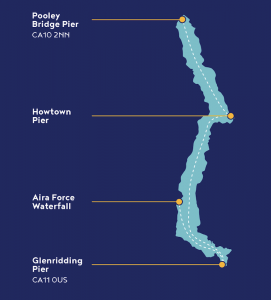
Situated at the north end of England’s Lake District, Ullswater is about two-and-a-quarter hours’ drive from Scotland’s central belt

Gleaming paintwork, polished brass, and varnished woodwork all point to the care given to maintaining the Ullswater fleet

Lady of the Lake waits for passengers at Glenridding, seen from the landing platform of Lady Dorothy

Without using any ropes, Raven cants round the northern end of Glenridding Pier, while Western Belle lies off service
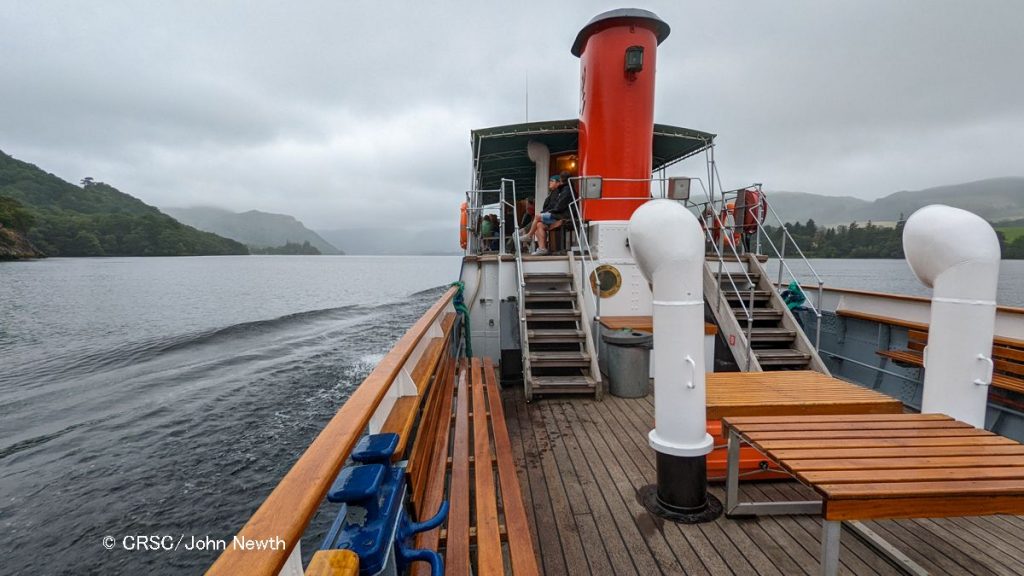
Sitting at the aft end of Raven gives a deceptive impression of speed greater than her usual 10 knots
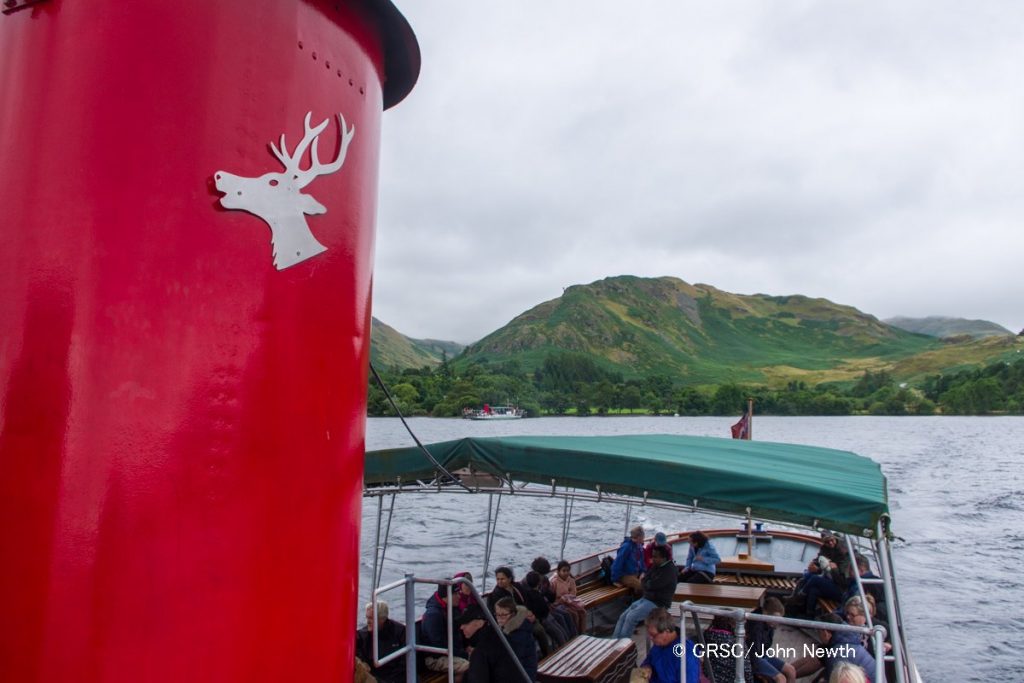
After a call at Howtown, Lady of the Lake continues north as Raven (in the distance) calls at the pier
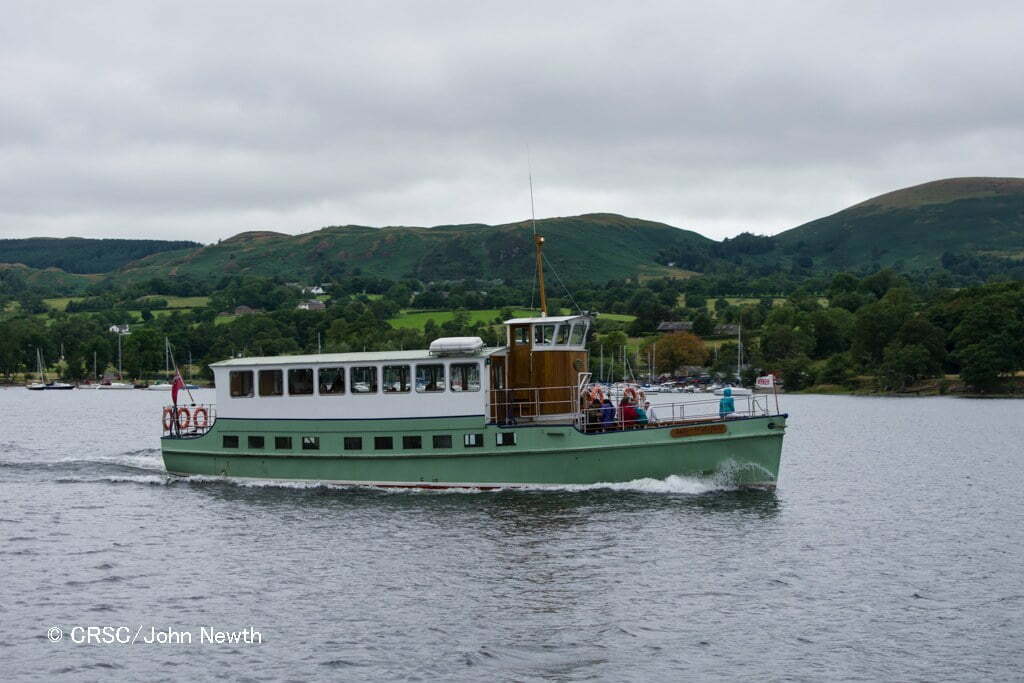
Despite her rather utilitarian appearance, Lady Wakefield is well appointed internally for evening cruises
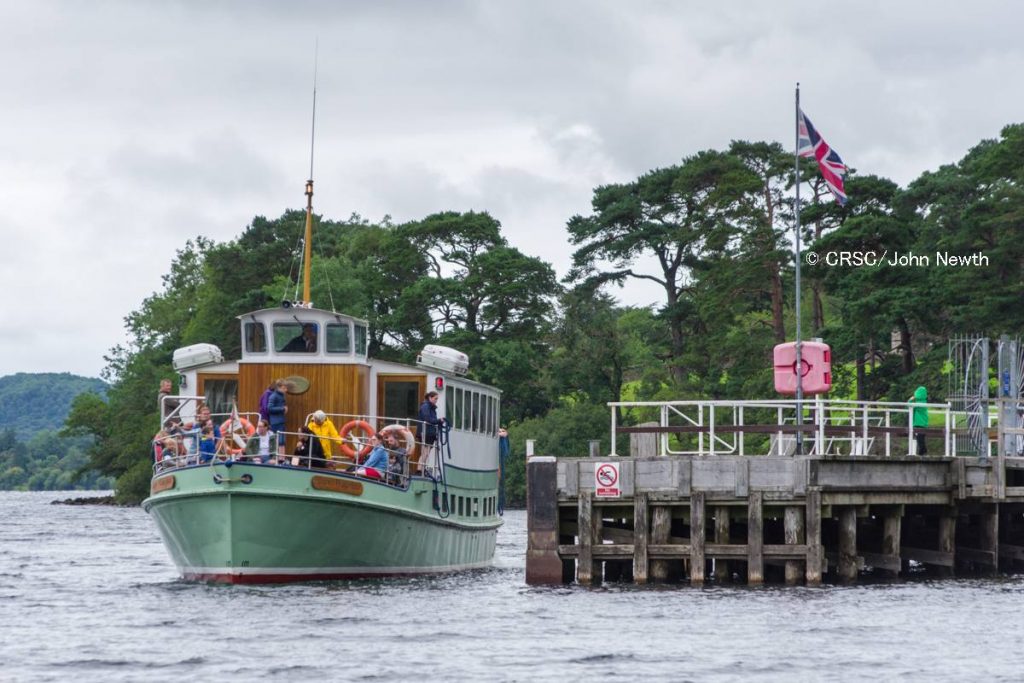
Lady Wakefield calls at Howtown, where the pier was raised in 2015 to enable calls to continue when the lake is high

The most recently joined member of the Ullswater fleet, Western Belle cuts cleanly through the waters south of Howtown
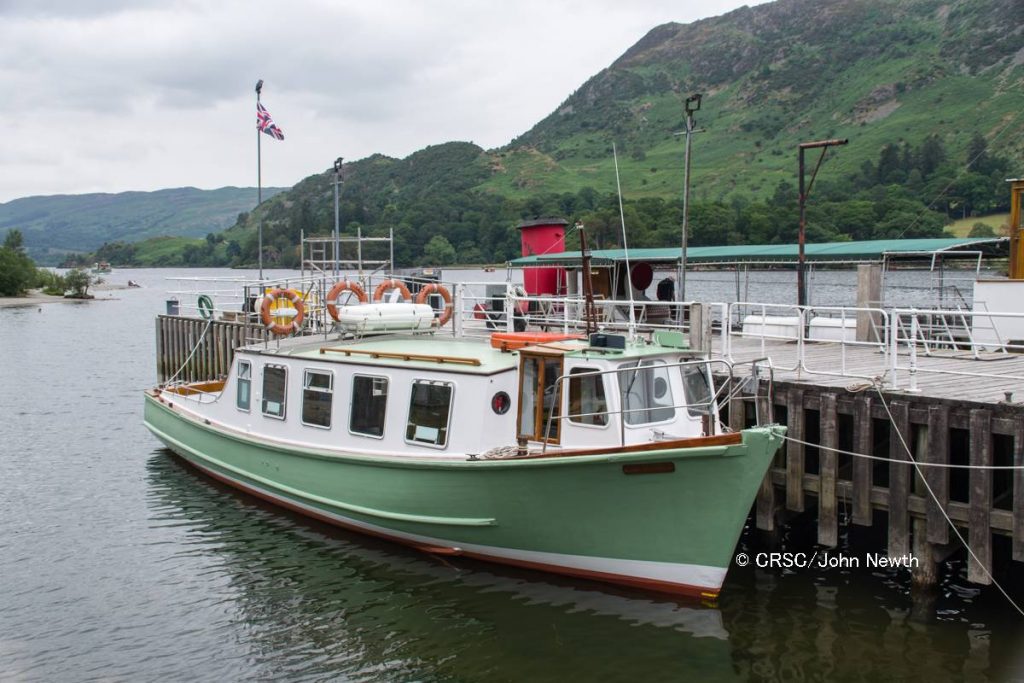
In between periods of service Lady Dorothy can sometimes be found lying at the inside berth at Glenridding

As she leaves Glenridding, we look back from Lady of the Lake to Lady Dorothy, Lady Wakefield and Western Belle. Raven would be leaving Pooley Bridge shortly afterwards
Published on 4 September 2022












